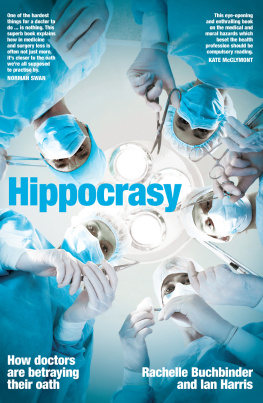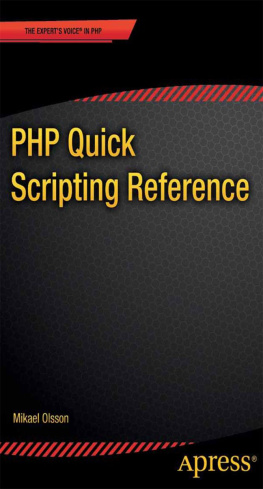Scripting Death
CALIFORNIA SERIES IN PUBLIC ANTHROPOLOGY
The California Series in Public Anthropology emphasizes the anthropologists role as an engaged intellectual. It continues anthropologys commitment to being an ethnographic witness, to describing, in human terms, how life is lived beyond the borders of many readers experiences. But it also adds a commitment, through ethnography, to reframing the terms of public debatetransforming received, accepted understandings of social issues with new insights, new framings.
Series Editor: Ieva Jusionyte (Harvard University)
Founding Editor: Robert Borofsky (Hawaii Pacific University)
Advisory Board: Catherine Besteman (Colby College), Philippe Bourgois (UCLA), Jason De Len (UCLA), Paul Farmer (Partners In Health), Laurence Ralph (Princeton University), and Nancy Scheper-Hughes (UC Berkeley)
University of California Press
Oakland, California
2021 by Mara Buchbinder
Library of Congress Cataloging-in-Publication Data
Names: Buchbinder, Mara, author.
Title: Scripting death : stories of assisted dying in America / Mara Buchbinder.
Other titles: California series in public anthropology ; 50.
Description: Oakland, California : University of California Press, [2021] | Series: California series in public anthropology ; 50 | Includes bibliographical references and index.
Identifiers: LCCN 2020035428 (print) | LCCN 2020035429 (ebook) | ISBN 9780520380202 (hardcover) | ISBN 9780520380219 (paperback) | ISBN 9780520380226 (epub)
Subjects: LCSH : Assisted suicideVermontCase studies21st century.
Classification: LCC R 726 . B 788 2021 (print) | LCC R 726 (ebook) | DDC 179.7dc23
LC record available at https://lccn.loc.gov/2020035428
LC ebook record available at https://lccn.loc.gov/2020035429
Manufactured in the United States of America
30 29 28 27 26 25 24 23 22 21
10 9 8 7 6 5 4 3 2 1
Introduction
I am going to start by stating the obvious: you are going to die.
The speaker, Barbara Mancini, a sixty-year-old blonde dressed in a conservative suit, paused to let her opening statement sink in. She stood at the front of a large auditorium filled mostly with men and women in their sixties and seventies. They had come to attend a public Death with Dignity educational event in Chapel Hill, North Carolina, and Mancini was the plenary speaker.
Mancini, a former nurse, had become an advocate for medical aid in dying after helping her terminally ill ninety-three-year-old father overdose on a bottle of morphine, at his request. In a television interview with Anderson Cooper on Minutes in October 2014, Mancini said, He asked me to hand him the bottle and I did. I had the dosing syringe in my hand, and he took the cap off, and he drank what was remaining in the bottle.
What followed was a horrifying sequence of events that rattled Mancini even in retelling them two years later. She told the hospice nurse what she had done, the nurse called 911, and her father was treated for an overdose. Mancini was arrested and charged with abetting an attempted suicide. At the hospital, her father was declared incompetent, and it fell to her mother to decide whether to treat the overdose (which he clearly did not want), or to let him die, which would have been worse for Mancinis legal case. Her mother chose the former. Her father was irate, telling the hospital staff not to hurt his daughter. He died four days later of pneumonia. A yearlong prosecution ensued, during which Mancini amassed thousands of dollars in legal fees and was forced to take unpaid leave from her job until a judge finally dismissed the case. In the aftermath, Mancini became a staunch advocate for Compassion & Choices, a national nonprofit organization committed to expanding end-of-life choices.
At the end of her account, Mancini offered the audience three takeaway points: (1) end-of-life care should align with the patients values, preferences, and wishes; (2) this could happen again; and (3) medical aid in dying should be an option. Her closing line, Who gets to tell you how you will die? was met with a standing ovation.
How did American society get to a place where choosing how you will die would seem like an obvious right and a reasonable expectation? How did death become something one does rather than something that happens? And what had prompted this large crowd of seniors to attend this event, even though aid in dying was not a legal option in North Carolina?
Medical aid in dying has expanded rapidly in recent years and has quickly captured the publics imagination. At the time of this writing, ten jurisdictions permit physicians to prescribe terminally ill adult patients a lethal dose of medication, provided certain preconditions are met, making this end-of-life option legally available to one in five Americans.
Advocates like Barbara Mancini presume a straightforward path, in which a terminally ill patient desiring to hasten death requests assistance from a trusted physician, who will accede to the patients wishes. If only medical aid in dying had been a legal option in Pennsylvania, Mancini wants us to believe, much of her fathers end-of-life suffering could have been avoided. Yet this narrative overlooks the many roadblocks to accessing aid in dying in states where it is legal, including identifying a physician willing to prescribe, paying for the medication, and following a complex bureaucratic protocol to ensure all of the legislative safeguards are met. Mancinis father might have been able to navigate these challenges with the help of his daughter, who, as a nurse, was experienced with the health care system. However, this book treats his ability to do so as a starting point for investigation, rather than a foregone conclusion, as the advocacy narrative suggests.
Until now, very little has been publicly known about how medical aid-in-dying laws affect ordinary citizens once they are put into practice. This book offers an in-depth account of how patients, caregivers, and health care providers navigate aid in dying as a new medical frontier in the aftermath of legalization. It chronicles two years of research I undertook to document the implementation of Vermonts 2013 Patient Choice and Control at End of Life Act. My primary research materials are interviews with 144 Vermont patients, caregivers, health care providers, activists, legislators, and other policy stakeholders, as well as participant observation in advocacy and educational events and professional medical conferences.
Between May 31, 2013, and June 30, 2017, paperwork for fifty-two individuals using this law was filed with the Vermont Department of Health. Forty-eight of them had a death certificate on file, of which twenty-nine had ingested the lethal prescription as of January 2018. Of the remaining individuals, seventeen died from their underlying disease, one died from other causes, and one had an unknown cause of death.
These utilization statistics underscore that, although medical aid in dying has captivated the publics imagination over the past twenty years, only a small segment of American society is likely to experience it themselves. This













